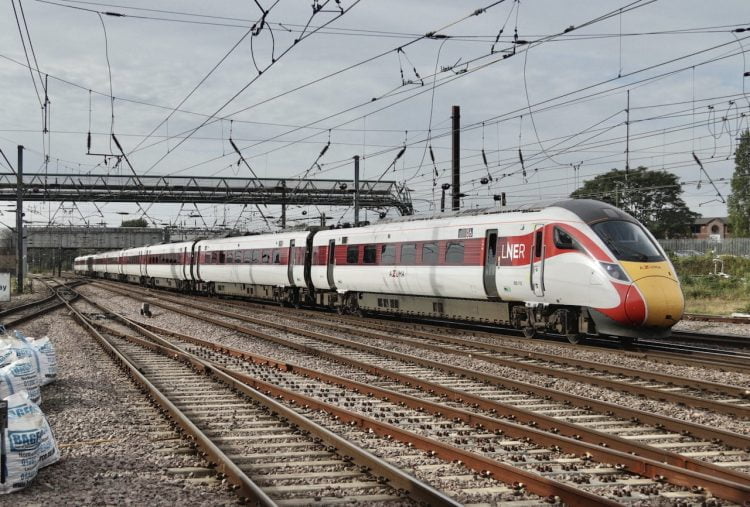The ORR has today published its interim review into the Hitachi Class 80X and 385s that were affected by stress corrosion of cracking.
The Class 800, 801, 802s are operated by London North Eastern Railway, Great Western Railway, TransPennine Express and Hull Trains.
These issues meant that a significant number of Class 800 trains were temporarily withdrawn from service in May.
In its report, the Office of Rail and Road has commended the “rapid” industry response and work to safely reintroduce the trains back into service.
The report says that cracks close to the yaw damper bracket and anti-roll bar fixing points were found to be a result of fatigue, whilst cracks near to the lifting plates were a result of stress corrosion.
Stress corrosion cracking happens when susceptible materials are exposed to a specific corrosive substance whilst under stress.

The report has found that once the cracks were found, the rail industry worked together to withdraw the trains and establish a way to assess which trains were able to return to service.
Also in the report, the ORR has said that since being put back into service, the trains have performed as specified with no unsafe conditions arising from the cracking.
A final report is expected from the ORR in December 2021, this will reveal the root cause of the cracking, which is currently unknown, and will review Hitachi’s plan for recovery and management.
HM Chief Inspector of Railways at ORR Ian Prosser CBE said: “Our interim findings confirm the cracking in the yaw damper and lifting plate are a result of fatigue and stress corrosion cracking – and that Hitachi made the sensible decision to withdraw all trains.
“Since then, the majority of trains have been put back into service with no unsafe conditions and no harm arising from the cracking.
“I welcome the good collaboration that has taken place since this issue arose. We are continuing to work with all parties to determine the root cause and will publish our final report in December.”
A Hitachi Rail spokesperson told RailAdvent: “The ORR’s interim report highlights how the industry took timely and appropriate decisions to maintain the highest levels of safety. This collaborative approach also helped to get trains back into service so passenger disruption was kept to a minimum.
The interim report also demonstrates the significant amount of detailed, and independently verified, assessments Hitachi Rail has conducted to keep trains running safely. Our enhanced maintenance regime is helping to deliver stable passenger service, while we work tirelessly with all partners on long-term solutions.”
You can read the full 46-page interim report by clicking here.
Where Next?
RAILADVENT NEWS
The latest railway news
RailAdvent Plus
Railway Discounts, 4k Video, pictures and more!
FREE NEWSLETTERS
Signup to our daily and weekly newsletters
RAILADVENT SHOP
Railway Prints, DVD’s / Blu-Ray’s, books and more
LOCOSTOP COMMUNITY
Come and share your railway pictures
UK STEAM INFO
Upcoming mainline steam tours/loco movements
orr
Visit their website






Responses
Hitachi are also worried about if cracks also appear on the Class 803, Class 805, Class 807 and Class 810 IET AT300 rolling stocks. As they are manufacturing new trains for First Group open access Lumo (formerly East Coast Trains), Avanti West Coast and East Midlands Railway.